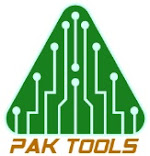How Blockchain Technology is Revolutionizing the Supply Chain Industry.
The force chain of diligence is one of the largest and most complex diligences in the world, with innumerable moving corridors and players involved. With so many different parties involved, there are bound to be inefficiencies and crimes that can impact the overall effectiveness of the force chain. Nonetheless, with the advent of blockchain technology, the supply chain is undergoing a significant transformation.
Blockchain technology is transforming supply chains by improving transparency, traceability, and efficiency. Let's take a closer look at how blockchain is achieving these benefits. translucency Improved transparency is one of the significant benefits of blockchain technology in the supply chain. Traditionally, the supply chain has been a complex web of multiple parties, including suppliers, manufacturers, distributors, and retailers. With so many parties involved, it can be delicate to track the movement of goods throughout the supply chain. Nonetheless, with blockchain technology, every party in the supply chain has access to the same tally, allowing for real-time visibility into the movement of goods.
This transparency ensures that everyone involved in the force chain has access to the same information, reducing the threat of crimes and detentions. Traceability In addition to providing transparency, blockchain technology also offers advanced traceability throughout the supply chain. In a traditional supply chain, it can be grueling to trace the origin of a product or raw material. Still, with blockchain technology, every product or raw material is assigned a unique digital identity that can be traced throughout the entire supply chain. This digital identity includes information similar to the origin of the product, its quality, and its trip through the supply chain.
This information can be used to corroborate the authenticity of products and ensure that they're ethically sourced. effectiveness Another significant advantage of blockchain technology in the supply chain is its increased efficiency. The force-chain system is notorious for its high costs and low effectiveness due to homemade processes and information silos. Nonetheless, with blockchain technology, all parties in the supply chain can access the same tally, eliminating the need for manual processes and lowering the risk of crime. This improved effectiveness can result in significant cost savings for companies and brisk delivery times for guests.

Real-world operations The benefits of blockchain technology in the supply chain aren't just theoretical; numerous real-world blockchain applications have already been developed. For example, IBM has created Food Trust, a blockchain-based solution for food safety.
Food Trust allows food directors, processors, distributors, and retailers to trace the origin of food products through the entire supply chain. As a result, the supply chain is more transparent and effective, lowering the risk of foodborne illnesses and increasing consumer trust in the food safety system. Another illustration of blockchain technology in the supply chain is the Maersk and IBM joint venture called Trade Lens. Trade Lens is a blockchain-based platform that provides real-time visibility into the movement of goods throughout the supply chain.This platform enables all parties involved in the force chain to participate in the same tally, perfecting transparency and effectiveness. Challenges and Considerations While blockchain technology has the implicit potential to revise the force chain of assiduity, there are still challenges and considerations to keep in mind. One of the biggest challenges is the need for all parties involved in the supply chain to borrow technology. However, it can limit the overall benefits of the technology if some parties choose not to borrow.













.jpg)






-min.jpg)
-min.jpg)






Social Plugin